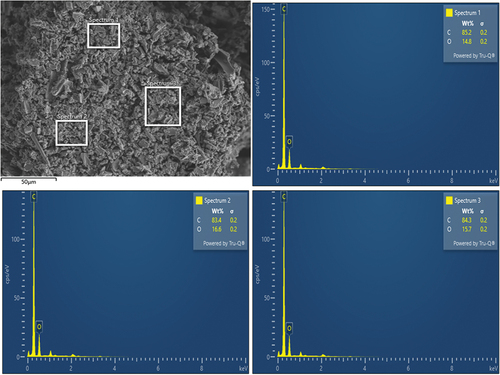Figures & data
Table 1. Chemical characteristics and nutrient analysis of cotton-sticks biochar (CB), sugarcane press-mud (SPM) and vegetable compost (VC)
Figure 1. Nitrogen adsorption-desorption isotherms (A) and scanning electron microscopy (SEM) analysis (B) of cotton-sticks biochar.

Table 2. Physio-chemical characteristics of the experimental soil
Figure 3. Effect of cotton-stick biochar and organic amendments on root N (a), shoot N (b), grain N (c), root P (d), shoot P (e), grain P (f), root K (g), shoot K (h), and grain K (i) content of two chickpea varieties. The error bars are mean ± S.E. CK, control; CSB, cotton-sticks biochar; SPM, sugarcane press-mud; VC, vegetable compost.

Figure 4. Effect of cotton-stick biochar and organic amendments on chlorophyll content of two chickpea varieties. The error bars are mean ± S.E. CK, control; CSB, cotton-sticks biochar; SPM, sugarcane press-mud; VC, vegetable compost.
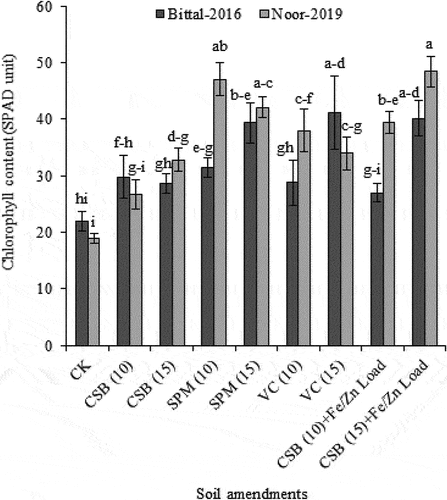
Figure 5. Effect of cotton-stick biochar and organic amendments on shoot length (a), root length (b), number of branches (c), root fresh weight (d), root dry weight (e), and shoot dry weight (f) of two chickpea varieties. The error bars are mean ± S.E. CK, control; CSB, cotton-sticks biochar; SPM, sugarcane press-mud; VC, vegetable compost.
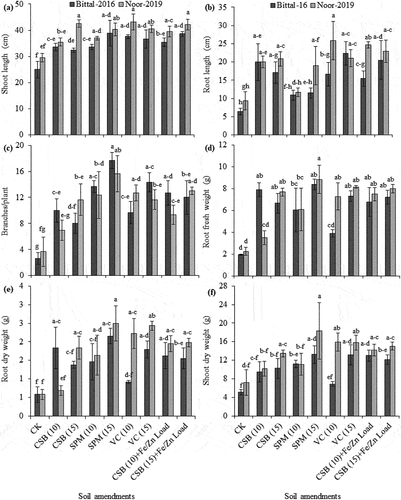
Figure 6. Effect of cotton-stick biochar and organic amendments on pods/plant (a), 100-grain weight (b), and grain yield (c) of two chickpea varieties. The error bars are mean ± S.E. CK, control; CSB, cotton-sticks biochar; SPM, sugarcane press-mud; VC, vegetable compost.
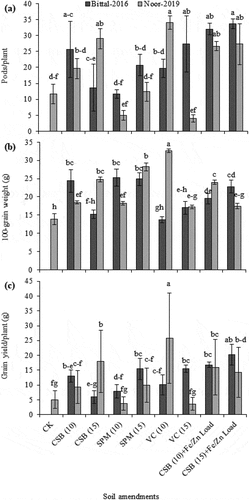
Figure 7. Correlation coefficients (r) indicating the association among nutrient contents, chlorophyll, growth and yield attributes of two chickpea varieties following cotton-stick biochar and organic amendments. The change in color represents the significant differences at p < 0.05. SL, shoot length; RL, root length, B/P, number of branches per plant; RFW, root fresh weight; RDW, root dry weight; SDW, shoot dry weight; P/P, pods per plant; 100-GW, 100-grain weight; GY, grain yield.
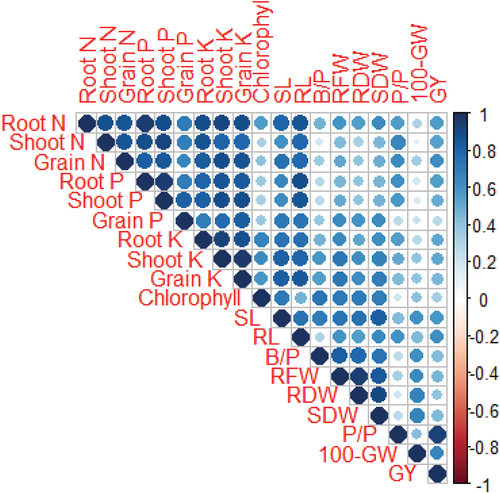
Figure 8. Biplot of combined principal component analysis (PCA) of nutrient and chlorophyll content with growth and yield attributes of two chickpea varieties following cotton-stick biochar and organic amendments. SL, shoot length; RL, root length, B/P, number of branches per plant; RFW, root fresh weight; RDW, root dry weight; SDW, shoot dry weight; P/P, pods per plant; 100-GW, 100-grain weight; GY, grain yield. T0, CK; T1, cotton-sticks biochar at 10 Mg ha−1; T2, cotton-sticks biochar at 15 Mg ha−1; T3, sugarcane press-mud at 10 Mg ha−1; T4, sugarcane press-mud at 15 Mg ha−1; T5, vegetable compost at 10 Mg ha−1; T6, vegetable compost at 15 Mg ha−1; T7, cotton-sticks biochar at 10 Mg ha−1 + Fe/Zn Load; T8, cotton-sticks biochar at 15 Mg ha−1 + Fe/Zn Load.
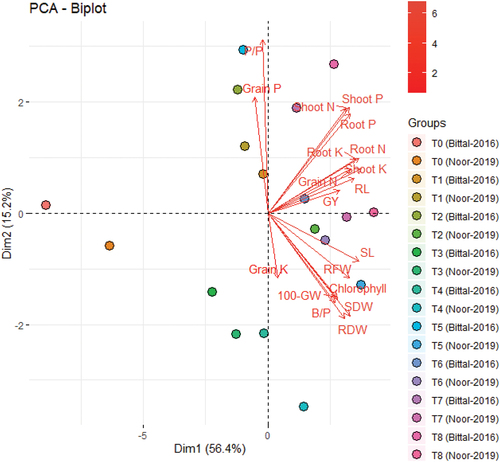
Table 3. Effect of cotton-stick biochar and organic amendments on chemical properties of sandy soil cultivated with two chickpea varieties
Supplemental Material
Download Zip (621.6 KB)Data availability statement
All data is available within the manuscript and its sup-porting information

